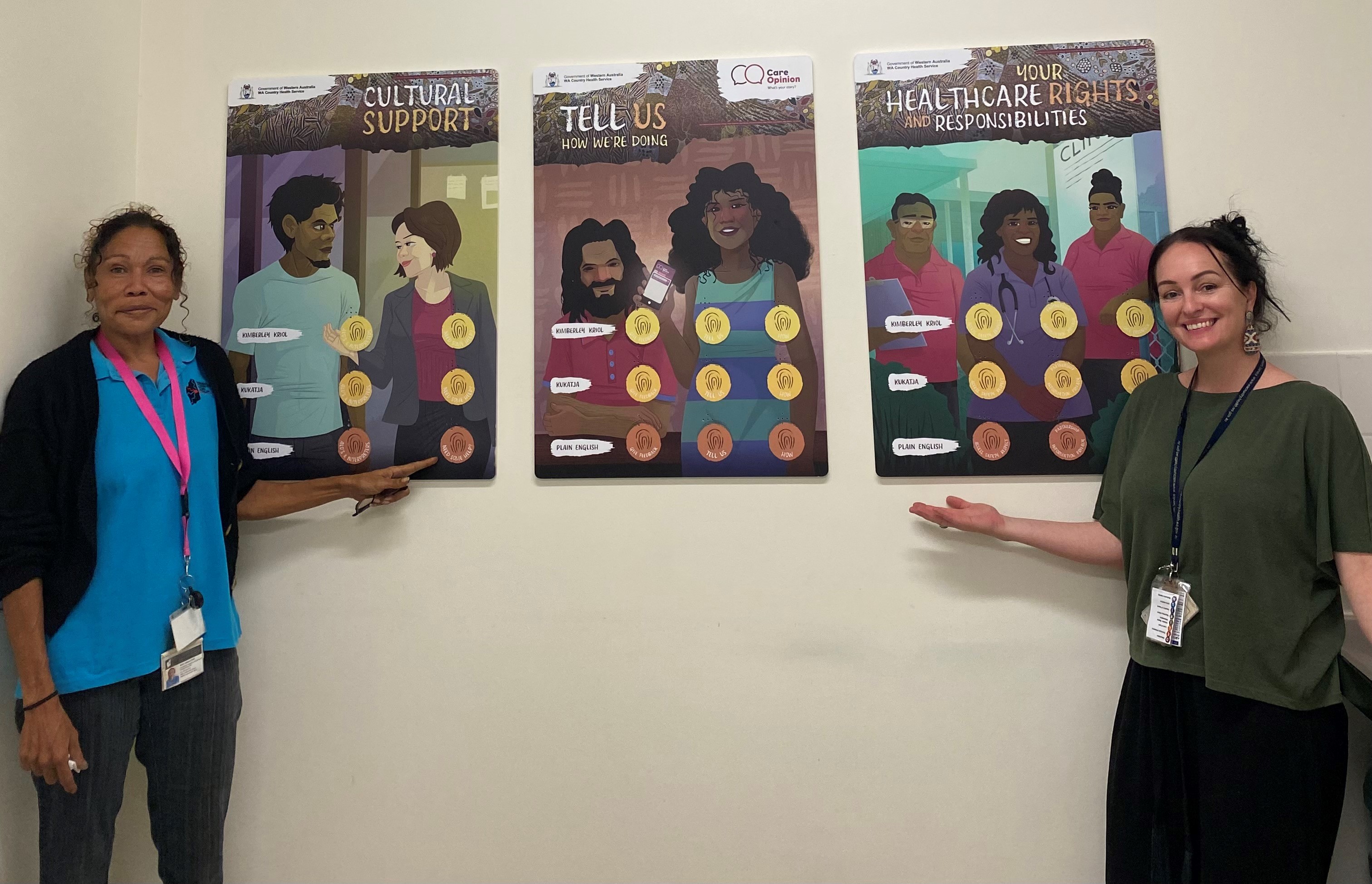Language and culture broadcast across Kimberley hospitals
 Aboriginal Interpreting Services WA's Healema Ward and WACHS Kimberley Quality Coordinator Jo Bull.
Aboriginal Interpreting Services WA's Healema Ward and WACHS Kimberley Quality Coordinator Jo Bull.
WA Country Health Service (WACHS) is combining technology with Aboriginal culture to improve the healthcare journey for patients and families across the Kimberley.
For the first time in country WA, ‘talking posters’ will be introduced into WACHS Kimberley health sites, presenting audio health messages in Walmajarri, Jaru, Kukatja, Kimberley Kriol and plain English.
Developed in collaboration with Aboriginal Interpreting Services WA (AIWA) and One Talk Technology, the posters also feature artwork by the local artists who created Kununurra Hospital’s Bush Medicine display.
East Kimberley Quality Coordinator Jo Bull said the posters would assist in bridging language barriers often experienced in the region as well as helping to preserve and embrace local Aboriginal culture.
“As Aboriginal languages were only ever spoken, meanings often cannot be transferred from one language to another which makes print translation difficult,” she said.
“It made sense to bridge that gap with audio technology and finding new, innovative ways to present health messages.
“In addition to meeting local challenges with English literacy, these posters work towards preserving and promoting language and culture within our region.
“Aboriginal language is intrinsically linked to culture, it’s a part of the social structure and values – by creating these posters we’re helping to create a culturally safe and welcoming healthcare service.”
More than 200 Aboriginal communities are located in the Kimberley, representing 45 per cent of the region’s population and speaking more than 34 different Aboriginal languages.
WACHS Kimberley Executive Director Rex O’Rourke said he was proud of the Kimberley teams who led the charge on the innovative project.
“Providing vital health information in Aboriginal language is an important part of providing care close to home, on country and helping to build trust in healthcare providers.
“It’s a really clever use of technology, helping us to build trust, pass on important information and in doing so, improving health outcomes for some of our most vulnerable community members.”

